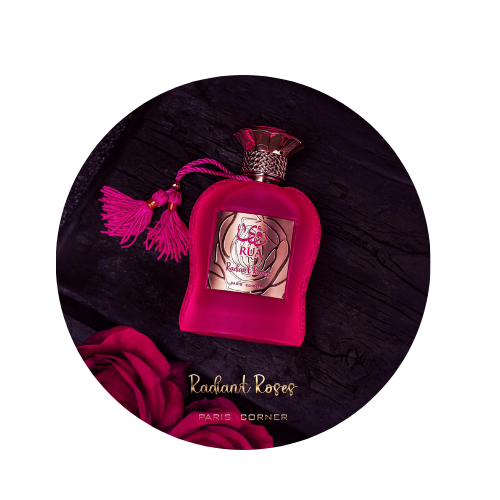Perfume Categories Demystified: How to Identify Your Favorite Fragrance Family
The world of perfumery is a mesmerizing universe filled with endless perfume categories, each offering a unique scent profile and emotional experience. Understanding the different types of perfume and fragrance types can help you discover what truly resonates with your personality. Whether you are drawn to floral fragrances, enchanted by woody perfumes, or tempted by gourmand perfumes, every category tells its own story.
Overview of Fragrance Types
When exploring perfume categories, it’s essential to know that the art of perfumery is built around distinct fragrance types. These include floral fragrances, citrus perfumes, woody perfumes, spicy scents, and gourmand perfumes. Each of these types of scents has a distinct character shaped by the blend of top, middle, and base perfume notes.
Floral Fragrances
When discussing perfume categories, floral fragrances stand as the timeless classics. These fragrance types are inspired by the natural beauty of blooming flowers such as rose, jasmine, lily, and peony. They form one of the most popular kinds of perfume scents for women and often symbolize romance, elegance, and femininity.
Within the floral fragrance family, you’ll find subcategories like single-flower scents (soliflores), which highlight one note such as rose or jasmine, and bouquet blends that combine multiple blooms. The perfume notes in floral fragrances usually open with light, airy top notes, followed by rich, soft heart notes that linger beautifully on the skin.
Citrus Perfumes
 For those who love invigorating freshness, citrus perfumes are among the most vibrant perfume categories. These fragrance types feature perfume notes extracted from lemon, bergamot, mandarin, grapefruit, and orange blossom. They are known for their clean, zesty scent profile that instantly uplifts your mood.
For those who love invigorating freshness, citrus perfumes are among the most vibrant perfume categories. These fragrance types feature perfume notes extracted from lemon, bergamot, mandarin, grapefruit, and orange blossom. They are known for their clean, zesty scent profile that instantly uplifts your mood.
Citrus perfumes belong to the lightest types of perfume fragrance, ideal for summer or everyday wear. Their perfume smell types evoke energy, positivity, and brightness, making them popular among both men and women.
Woody Perfumes
Rich, warm, and grounding woody perfumes are one of the most elegant perfume categories in modern perfumery. Known for their sophisticated scent profiles, these fragrance types often feature perfume notes such as sandalwood, cedarwood, vetiver, patchouli, and amber.
Woody perfumes belong to the more refined types of perfume fragrance, appealing to those who appreciate earthy, mysterious, and sensual aromas. The perfume smell types in this category often evolve, revealing deep and smoky layers as they settle.
Spicy Scents
When you crave something bold and stimulating, spicy scents are the ideal perfume category. These fragrance types often feature perfume notes like cardamom, cinnamon, clove, pepper, and nutmeg. The scent profile is vibrant, fiery, and full of character.
Spicy scents belong to the intriguing kinds of perfume scents that can instantly make a statement. Their composition often bridges the gap between oriental scents and woody perfumes, creating a warm and captivating aroma.
Gourmand Perfumes

Among all perfume categories, gourmand perfumes are perhaps the most indulgent. These fragrance types evoke the irresistible aroma of edible delights — think vanilla, caramel, chocolate, coffee, and praline. The perfume notes in gourmand perfumes are designed to awaken the senses with their cozy, dessert-like scent profile.
Gourmand perfumes have become one of the most loved types of perfume in recent years, thanks to their ability to combine sweetness with sensuality. These perfume smell types are comforting yet luxurious, making them perfect for cool evenings or romantic settings.
Understanding Perfume Notes
To fully appreciate the diversity within perfume categories, one must understand perfume notes, the building blocks that define every type of perfume. Each fragrance unfolds in layers of top, middle, and base notes, creating its complete scent profile
Top Notes
Top notes are the first impression in any perfume fragrance. These perfume notes are light, fresh, and fleeting, lasting only a few minutes after application. Common top notes include citrus elements, herbs, and light florals often found in citrus perfumes and floral fragrances.
Middle Notes
The heart or middle notes form the essence of most fragrance types. These perfume notes emerge once the top notes fade, revealing the true personality of the scent. Middle notes often include flowers, spices, and fruits, a hallmark of floral fragrances, spicy aromas, and even gourmand perfumes.
Base Notes
Base notes are the foundation that anchors every type of perfume fragrance. Rich and long-lasting, these perfume notes provide depth and stability. Common base notes include amber, musk, vanilla, and woods, making them integral to woody perfumes and oriental scents.
Sweet vs. Fresh
If your ideal scent profile is cozy and edible, gourmand perfumes with notes of caramel or vanilla suit you best. But if you prefer a light, clean aura, citrus perfumes or floral fragrances will offer that refreshing vibrance.
Earthy vs. Spicy
For those who love grounded, nature-inspired aromas, woody perfumes deliver depth and calmness through sandalwood or vetiver perfume notes. On the other hand, spicy scents bring heat and excitement, blending pepper, cinnamon, and cardamom for an energetic scent profile.
Layering Scents: Creating Unique Combinations
One of the most creative ways to personalize your fragrance journey is through layering scents. This art involves combining different perfume categories to craft your own scent profile. By mixing various fragrance types, you can create endless possibilities that reflect your individuality.
Conclusion: Finding Your Signature Fragrance
Exploring the world of perfume categories is a journey of self-discovery. From floral fragrances and citrus perfumes to woody perfumes, gourmand perfumes, every category offers a distinct scent profile that reflects emotion, personality, and style.
Understanding perfume notes and how they form the backbone of all fragrance types gives you the confidence to explore and even experiment with layering scents. The more you know the different types of fragrances, the easier it becomes to identify your favorite among the vast kinds of perfume available.











